-

Feb
24
Meat Industry Calls for Passing of the Ocean Shipping Reform Act

The Ocean Shipping Reform Act was recently introduced to the Senate after the House version was passed by a wide bipartisan vote in December 2021. The bill addresses unreasonable ocean carrier practices that are undermining the competitiveness of American exporters including the meat and poultry industry.
Read more
-

Feb
24
Farmer Fairness Website Launched by Government
.png?sfvrsn=c7824dd1_0)
The United States Department of Agriculture (USDA) and Department of Justice (DOJ) launch a new website for farmers and ranchers as part of the Biden administration’s efforts to uphold competition laws.
Read more
-

Feb
24
Farm Income Forecast Above Average for Second Year
.png?sfvrsn=8d824dd1_0)
The United States Department of Agriculture’s (USDA) Economic Research Services (ERS) has published the 2022 Farm Sector Income Forecast. The report measures, forecasts, and explains indicators of economic performance for the U.S. farm sector and farm businesses by resource region and commodity specialization.
Read more
-

Feb
24
Executive Office Releases “Protecting the Integrity of Government Science” Report

The report set to establish scientific integrity principles and best practices and focused on how to prevent political interference in the communication of science, and how to improve the transparency of scientific-integrity policies.
Read more
-

Feb
17
Interpretive Summary: Electronically controlled cooling pads can improve litter growth performance and indirect measures of milk production in heat-stressed lactating sows
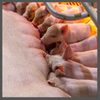
Lactating sows are heat stress sensitive due to greater feed intake and metabolic heat production to support milk production. Therefore, heat-stressed lactating sows reduce their feed intake and undergo physiological changes that prioritize survival over productivity which reduces milk production.
Read more
-

Feb
17
Interpretive Summary: Weight loss and high-protein, high-fiber diet consumption impact blood metabolite profiles, body composition, voluntary physical activity, fecal microbiota, and fecal metabolites of adult dogs

Canine obesity is associated with reduced lifespan and metabolic dysfunction, but dietary intervention may aid in its management.
Read more
-

Feb
17
Interpretive Summary: Hematological and immunological responses to naturally occurring bovine respiratory disease in newly received beef calves in a commercial stocker farm
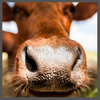
Blood and immune parameters are altered during bovine respiratory disease (BRD) progression and can be used for predicting disease status.
Read more
-

Feb
17
Interpretive Summary: Identify known and novel candidate genes associated with backfat thickness in Duroc pigs by large-scale genomewide association analysis
.png?sfvrsn=65854dd1_0)
Backfat thickness (BFT) is a complex and economically important trait in the pig industry because it reflects fat deposition and can be used to measure the carcass lean meat percentage in pigs.
Read more
-

Feb
17
Interpretive Summary: Timing of maternal supplementation of dried distillers grains during late gestation influences postnatal growth, immunocompetence, and carcass characteristics of Bos indicus-influenced beef calves
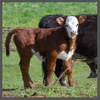
This 2-yr study evaluated the effect of the timing of dried distillers grains (DDG) supplementation during the last trimester of gestation in Bos indicus-influenced beef cows and the subsequent impact on their offspring.
Read more
-

Feb
17
Interpretive Summary: Intake, ruminal fermentation parameters, and apparent total-tract digestibility by beef steers consuming Pensacola bahiagrass hay treated with calcium oxide
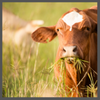
With the ever-growing desire to increase efficiency in beef cattle production, researchers have developed strategies such as treating poor-quality forages with chemicals to increase the digestibility of fiber fractions, consequently increasing their energy value for cattle feeding.
Read more
-

Feb
17
Interpretive Summary: Development of genomic predictions for Angus cattle in Brazil incorporating genotypes from related American sires
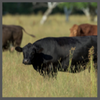
There was a desire to implement genomic selection for Angus cattle in Brazil since the technology has been proved to increase genetic gain in animal breeding programs.
Read more
-

Feb
17
Interpretive Summary: Proteomic profiling of plasma-derived small extracellular vesicles: a novel tool for understanding the systemic effects of tick burden in cattle
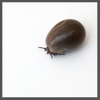
Cattle ticks are a significant burden to cattle industries globally. Current methods to treat cattle ticks are costly and inefficient in the long term. It has been noted that while some cattle may exhibit a natural resistance to ticks, others carry a heavy tick burden.
Read more
-

Feb
10
Interpretive Summary: Effects of a blend of essential oils, medium-chain fatty acids, and a toxin-adsorbing mineral on diarrhea and gut microbiome of weanling pigs experimentally infected with a pathogenic Escherichia coli
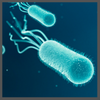
This experiment aims to investigate an antimicrobial blend consisting of essential oils, medium-chain fatty acids, and a toxin-adsorbing mineral on diarrhea, growth performance, and gut microbiome of newly weaned pigs experimentally infected with a pathogenic Escherichia coli (F18 E. coli).
Read more
-

Feb
10
Interpretive Summary: Effects of supplementing low-protein diets with sodium dichloroacetate and glucose on growth performance, carcass traits, and meat quality of growing-finishing pigs
.png?sfvrsn=d68f4dd1_0)
The objective of this study was to evaluate the effects of supplementing low-protein diets with sodium dichloroacetate (DCA) and glucose on growth performance, carcass traits, and meat quality of growing-finishing pigs.
Read more
-

Feb
10
Interpretive Summary: Supplementing a blend of magnesium oxide to feedlot cattle: effects on ruminal, physiological, and productive responses
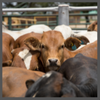
Acidosis is a common digestive disorder in feedlot cattle consuming high-grain diets, resulting in excessive accumulation of organic acids and pH reduction in the rumen.
Read more
-

Feb
10
Interpretive Summary: Characterizing the effect of incrementally increasing dry bulb temperature on linear and nonlinear measures of heart rate variability in nonpregnant, mid-gestation, and late-gestation sows
.png?sfvrsn=168e4dd1_0)
Pregnant pigs may be at a higher risk of poor physiological outcomes due to heat exposure compared to mature female pigs that are not pregnant.
Read more
-

Feb
03
Interpretive Summary: Concentration and heritability of immunoglobulin G and natural antibody immunoglobulin M in dairy and beef colostrum along with serum total protein in their calves
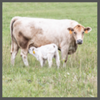
Understanding how breed influences immunoglobulin (Ig) G and natural antibody (NAb) IgM concentrations in colostrum can improve bovine colostrum quality and calf health. Maternal colostral IgG is abundant, persistent, and pathogen specific.
Read more
-

Feb
03
Interpretive Summary: Effect of amino acid blend as alternative to antibiotics for growing pigs
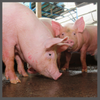
Dietary antibiotics have been used in pig farming practices to avoid health problems, improving animal growth performance. However, antimicrobial resistance due to the use of antibiotics in farms is considered to be a global health challenge.
Read more
-

Feb
03
Interpretive Summary: Effects of in ovo feeding of disaccharide and/or methionine on hatchability, growth performance, blood hematology, and serum antioxidant parameters in geese

In modern poultry husbandry, hatchery treatments and/or transportation make hatched neonates subject to encounter a fasting period after incubation. This is a big problem to limit the growth and survivability of birds.
Read more
-

Feb
03
Interpretive Summary: Effect of bupivacaine liposome suspension administered as a local anesthetic block on indicators of pain and distress during and after surgical castration in dairy calves
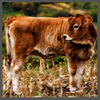
Castration is a routine procedure performed on beef and dairy operations in the United States. All methods of castration cause pain. The American Veterinary Medical Association and the American Association of Bovine Practitioners recommend that anesthesia and analgesia be administered during castration.
Read more
 FebMeat Industry Calls for Passing of the Ocean Shipping Reform Act
FebMeat Industry Calls for Passing of the Ocean Shipping Reform Act The Ocean Shipping Reform Act was recently introduced to the Senate after the House version was passed by a wide bipartisan vote in December 2021. The bill addresses unreasonable ocean carrier practices that are undermining the competitiveness of American exporters including the meat and poultry industry.
The Ocean Shipping Reform Act was recently introduced to the Senate after the House version was passed by a wide bipartisan vote in December 2021. The bill addresses unreasonable ocean carrier practices that are undermining the competitiveness of American exporters including the meat and poultry industry. FebFarmer Fairness Website Launched by Government
FebFarmer Fairness Website Launched by Government.png?sfvrsn=c7824dd1_0) The United States Department of Agriculture (USDA) and Department of Justice (DOJ) launch a new website for farmers and ranchers as part of the Biden administration’s efforts to uphold competition laws.
The United States Department of Agriculture (USDA) and Department of Justice (DOJ) launch a new website for farmers and ranchers as part of the Biden administration’s efforts to uphold competition laws. FebFarm Income Forecast Above Average for Second Year
FebFarm Income Forecast Above Average for Second Year.png?sfvrsn=8d824dd1_0) The United States Department of Agriculture’s (USDA) Economic Research Services (ERS) has published the 2022 Farm Sector Income Forecast. The report measures, forecasts, and explains indicators of economic performance for the U.S. farm sector and farm businesses by resource region and commodity specialization.
The United States Department of Agriculture’s (USDA) Economic Research Services (ERS) has published the 2022 Farm Sector Income Forecast. The report measures, forecasts, and explains indicators of economic performance for the U.S. farm sector and farm businesses by resource region and commodity specialization. FebExecutive Office Releases “Protecting the Integrity of Government Science” Report
FebExecutive Office Releases “Protecting the Integrity of Government Science” Report The report set to establish scientific integrity principles and best practices and focused on how to prevent political interference in the communication of science, and how to improve the transparency of scientific-integrity policies.
The report set to establish scientific integrity principles and best practices and focused on how to prevent political interference in the communication of science, and how to improve the transparency of scientific-integrity policies. FebInterpretive Summary: Electronically controlled cooling pads can improve litter growth performance and indirect measures of milk production in heat-stressed lactating sows
FebInterpretive Summary: Electronically controlled cooling pads can improve litter growth performance and indirect measures of milk production in heat-stressed lactating sows Lactating sows are heat stress sensitive due to greater feed intake and metabolic heat production to support milk production. Therefore, heat-stressed lactating sows reduce their feed intake and undergo physiological changes that prioritize survival over productivity which reduces milk production.
Lactating sows are heat stress sensitive due to greater feed intake and metabolic heat production to support milk production. Therefore, heat-stressed lactating sows reduce their feed intake and undergo physiological changes that prioritize survival over productivity which reduces milk production. FebInterpretive Summary: Weight loss and high-protein, high-fiber diet consumption impact blood metabolite profiles, body composition, voluntary physical activity, fecal microbiota, and fecal metabolites of adult dogs
FebInterpretive Summary: Weight loss and high-protein, high-fiber diet consumption impact blood metabolite profiles, body composition, voluntary physical activity, fecal microbiota, and fecal metabolites of adult dogs Canine obesity is associated with reduced lifespan and metabolic dysfunction, but dietary intervention may aid in its management.
Canine obesity is associated with reduced lifespan and metabolic dysfunction, but dietary intervention may aid in its management. FebInterpretive Summary: Hematological and immunological responses to naturally occurring bovine respiratory disease in newly received beef calves in a commercial stocker farm
FebInterpretive Summary: Hematological and immunological responses to naturally occurring bovine respiratory disease in newly received beef calves in a commercial stocker farm Blood and immune parameters are altered during bovine respiratory disease (BRD) progression and can be used for predicting disease status.
Blood and immune parameters are altered during bovine respiratory disease (BRD) progression and can be used for predicting disease status. FebInterpretive Summary: Identify known and novel candidate genes associated with backfat thickness in Duroc pigs by large-scale genomewide association analysis
FebInterpretive Summary: Identify known and novel candidate genes associated with backfat thickness in Duroc pigs by large-scale genomewide association analysis.png?sfvrsn=65854dd1_0) Backfat thickness (BFT) is a complex and economically important trait in the pig industry because it reflects fat deposition and can be used to measure the carcass lean meat percentage in pigs.
Backfat thickness (BFT) is a complex and economically important trait in the pig industry because it reflects fat deposition and can be used to measure the carcass lean meat percentage in pigs. FebInterpretive Summary: Timing of maternal supplementation of dried distillers grains during late gestation influences postnatal growth, immunocompetence, and carcass characteristics of Bos indicus-influenced beef calves
FebInterpretive Summary: Timing of maternal supplementation of dried distillers grains during late gestation influences postnatal growth, immunocompetence, and carcass characteristics of Bos indicus-influenced beef calves This 2-yr study evaluated the effect of the timing of dried distillers grains (DDG) supplementation during the last trimester of gestation in Bos indicus-influenced beef cows and the subsequent impact on their offspring.
This 2-yr study evaluated the effect of the timing of dried distillers grains (DDG) supplementation during the last trimester of gestation in Bos indicus-influenced beef cows and the subsequent impact on their offspring. FebInterpretive Summary: Intake, ruminal fermentation parameters, and apparent total-tract digestibility by beef steers consuming Pensacola bahiagrass hay treated with calcium oxide
FebInterpretive Summary: Intake, ruminal fermentation parameters, and apparent total-tract digestibility by beef steers consuming Pensacola bahiagrass hay treated with calcium oxide With the ever-growing desire to increase efficiency in beef cattle production, researchers have developed strategies such as treating poor-quality forages with chemicals to increase the digestibility of fiber fractions, consequently increasing their energy value for cattle feeding.
With the ever-growing desire to increase efficiency in beef cattle production, researchers have developed strategies such as treating poor-quality forages with chemicals to increase the digestibility of fiber fractions, consequently increasing their energy value for cattle feeding. FebInterpretive Summary: Development of genomic predictions for Angus cattle in Brazil incorporating genotypes from related American sires
FebInterpretive Summary: Development of genomic predictions for Angus cattle in Brazil incorporating genotypes from related American sires There was a desire to implement genomic selection for Angus cattle in Brazil since the technology has been proved to increase genetic gain in animal breeding programs.
There was a desire to implement genomic selection for Angus cattle in Brazil since the technology has been proved to increase genetic gain in animal breeding programs. FebInterpretive Summary: Proteomic profiling of plasma-derived small extracellular vesicles: a novel tool for understanding the systemic effects of tick burden in cattle
FebInterpretive Summary: Proteomic profiling of plasma-derived small extracellular vesicles: a novel tool for understanding the systemic effects of tick burden in cattle Cattle ticks are a significant burden to cattle industries globally. Current methods to treat cattle ticks are costly and inefficient in the long term. It has been noted that while some cattle may exhibit a natural resistance to ticks, others carry a heavy tick burden.
Cattle ticks are a significant burden to cattle industries globally. Current methods to treat cattle ticks are costly and inefficient in the long term. It has been noted that while some cattle may exhibit a natural resistance to ticks, others carry a heavy tick burden. FebInterpretive Summary: Effects of a blend of essential oils, medium-chain fatty acids, and a toxin-adsorbing mineral on diarrhea and gut microbiome of weanling pigs experimentally infected with a pathogenic Escherichia coli
FebInterpretive Summary: Effects of a blend of essential oils, medium-chain fatty acids, and a toxin-adsorbing mineral on diarrhea and gut microbiome of weanling pigs experimentally infected with a pathogenic Escherichia coli This experiment aims to investigate an antimicrobial blend consisting of essential oils, medium-chain fatty acids, and a toxin-adsorbing mineral on diarrhea, growth performance, and gut microbiome of newly weaned pigs experimentally infected with a pathogenic Escherichia coli (F18 E. coli).
This experiment aims to investigate an antimicrobial blend consisting of essential oils, medium-chain fatty acids, and a toxin-adsorbing mineral on diarrhea, growth performance, and gut microbiome of newly weaned pigs experimentally infected with a pathogenic Escherichia coli (F18 E. coli). FebInterpretive Summary: Effects of supplementing low-protein diets with sodium dichloroacetate and glucose on growth performance, carcass traits, and meat quality of growing-finishing pigs
FebInterpretive Summary: Effects of supplementing low-protein diets with sodium dichloroacetate and glucose on growth performance, carcass traits, and meat quality of growing-finishing pigs.png?sfvrsn=d68f4dd1_0) The objective of this study was to evaluate the effects of supplementing low-protein diets with sodium dichloroacetate (DCA) and glucose on growth performance, carcass traits, and meat quality of growing-finishing pigs.
The objective of this study was to evaluate the effects of supplementing low-protein diets with sodium dichloroacetate (DCA) and glucose on growth performance, carcass traits, and meat quality of growing-finishing pigs. FebInterpretive Summary: Supplementing a blend of magnesium oxide to feedlot cattle: effects on ruminal, physiological, and productive responses
FebInterpretive Summary: Supplementing a blend of magnesium oxide to feedlot cattle: effects on ruminal, physiological, and productive responses Acidosis is a common digestive disorder in feedlot cattle consuming high-grain diets, resulting in excessive accumulation of organic acids and pH reduction in the rumen.
Acidosis is a common digestive disorder in feedlot cattle consuming high-grain diets, resulting in excessive accumulation of organic acids and pH reduction in the rumen. FebInterpretive Summary: Characterizing the effect of incrementally increasing dry bulb temperature on linear and nonlinear measures of heart rate variability in nonpregnant, mid-gestation, and late-gestation sows
FebInterpretive Summary: Characterizing the effect of incrementally increasing dry bulb temperature on linear and nonlinear measures of heart rate variability in nonpregnant, mid-gestation, and late-gestation sows.png?sfvrsn=168e4dd1_0) Pregnant pigs may be at a higher risk of poor physiological outcomes due to heat exposure compared to mature female pigs that are not pregnant.
Pregnant pigs may be at a higher risk of poor physiological outcomes due to heat exposure compared to mature female pigs that are not pregnant. FebInterpretive Summary: Concentration and heritability of immunoglobulin G and natural antibody immunoglobulin M in dairy and beef colostrum along with serum total protein in their calves
FebInterpretive Summary: Concentration and heritability of immunoglobulin G and natural antibody immunoglobulin M in dairy and beef colostrum along with serum total protein in their calves Understanding how breed influences immunoglobulin (Ig) G and natural antibody (NAb) IgM concentrations in colostrum can improve bovine colostrum quality and calf health. Maternal colostral IgG is abundant, persistent, and pathogen specific.
Understanding how breed influences immunoglobulin (Ig) G and natural antibody (NAb) IgM concentrations in colostrum can improve bovine colostrum quality and calf health. Maternal colostral IgG is abundant, persistent, and pathogen specific. FebInterpretive Summary: Effect of amino acid blend as alternative to antibiotics for growing pigs
FebInterpretive Summary: Effect of amino acid blend as alternative to antibiotics for growing pigs Dietary antibiotics have been used in pig farming practices to avoid health problems, improving animal growth performance. However, antimicrobial resistance due to the use of antibiotics in farms is considered to be a global health challenge.
Dietary antibiotics have been used in pig farming practices to avoid health problems, improving animal growth performance. However, antimicrobial resistance due to the use of antibiotics in farms is considered to be a global health challenge. FebInterpretive Summary: Effects of in ovo feeding of disaccharide and/or methionine on hatchability, growth performance, blood hematology, and serum antioxidant parameters in geese
FebInterpretive Summary: Effects of in ovo feeding of disaccharide and/or methionine on hatchability, growth performance, blood hematology, and serum antioxidant parameters in geese In modern poultry husbandry, hatchery treatments and/or transportation make hatched neonates subject to encounter a fasting period after incubation. This is a big problem to limit the growth and survivability of birds.
In modern poultry husbandry, hatchery treatments and/or transportation make hatched neonates subject to encounter a fasting period after incubation. This is a big problem to limit the growth and survivability of birds. FebInterpretive Summary: Effect of bupivacaine liposome suspension administered as a local anesthetic block on indicators of pain and distress during and after surgical castration in dairy calves
FebInterpretive Summary: Effect of bupivacaine liposome suspension administered as a local anesthetic block on indicators of pain and distress during and after surgical castration in dairy calves Castration is a routine procedure performed on beef and dairy operations in the United States. All methods of castration cause pain. The American Veterinary Medical Association and the American Association of Bovine Practitioners recommend that anesthesia and analgesia be administered during castration.
Castration is a routine procedure performed on beef and dairy operations in the United States. All methods of castration cause pain. The American Veterinary Medical Association and the American Association of Bovine Practitioners recommend that anesthesia and analgesia be administered during castration.



